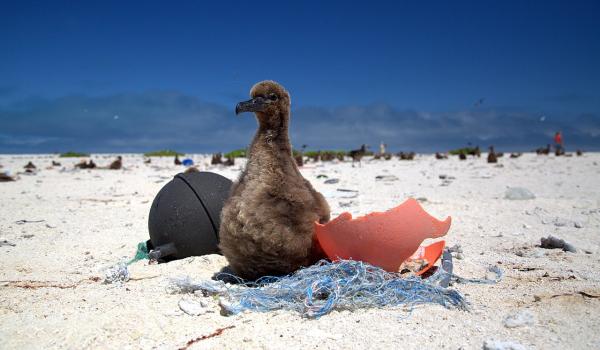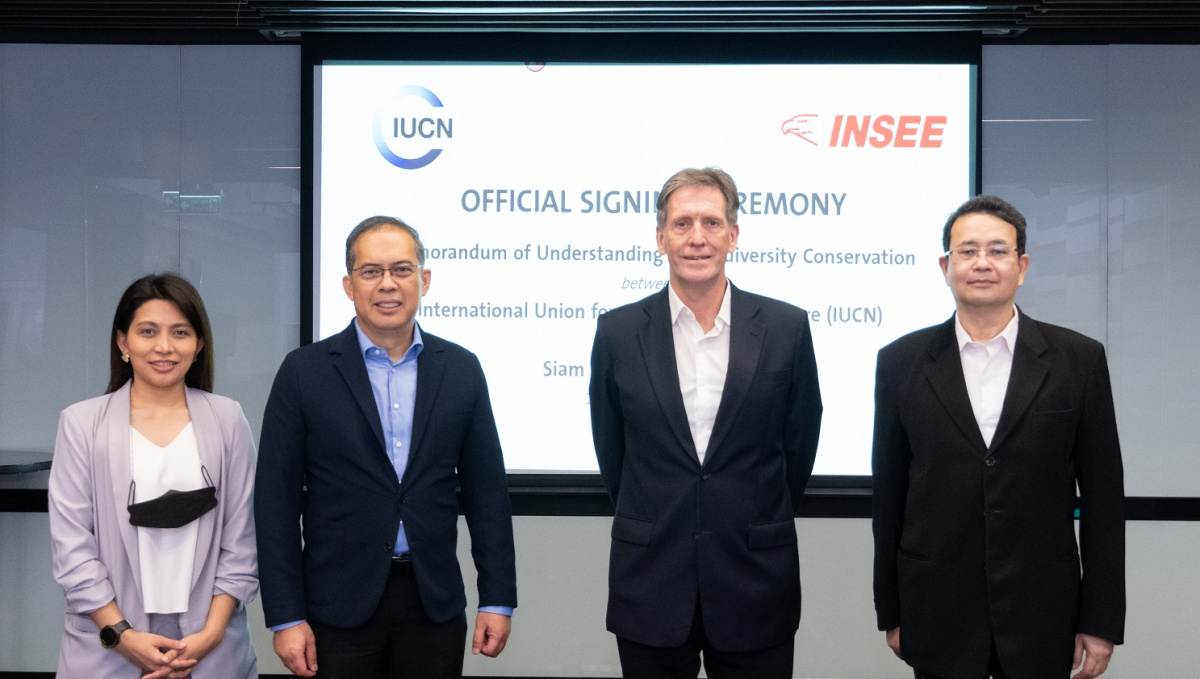Marriott Resorts and IUCN develop Reef Education Center in Phuket
Phuket Marriott Resort and Spa, Merlin Beach is unique among hotels in Phuket in that it has its own house reef, teeming with diverse fish and coral life. The coral reef can be explored by snorkeling or diving from the beach at high tide, or wading around the tide pools when the tide is low. As a component of the ongoing partnership between Marriott Resorts and IUCN, the partnership has developed a Reef Education Center, located at the beachfront of the hotel, just a short swim from the hotel’s “house reef.” The Reef Center provides guests with information about the hotel’s unique marine ecosystem and opportunities to explore it, by renting snorkel gear, or diving with Sea Bees Diving, the onsite dive shop.
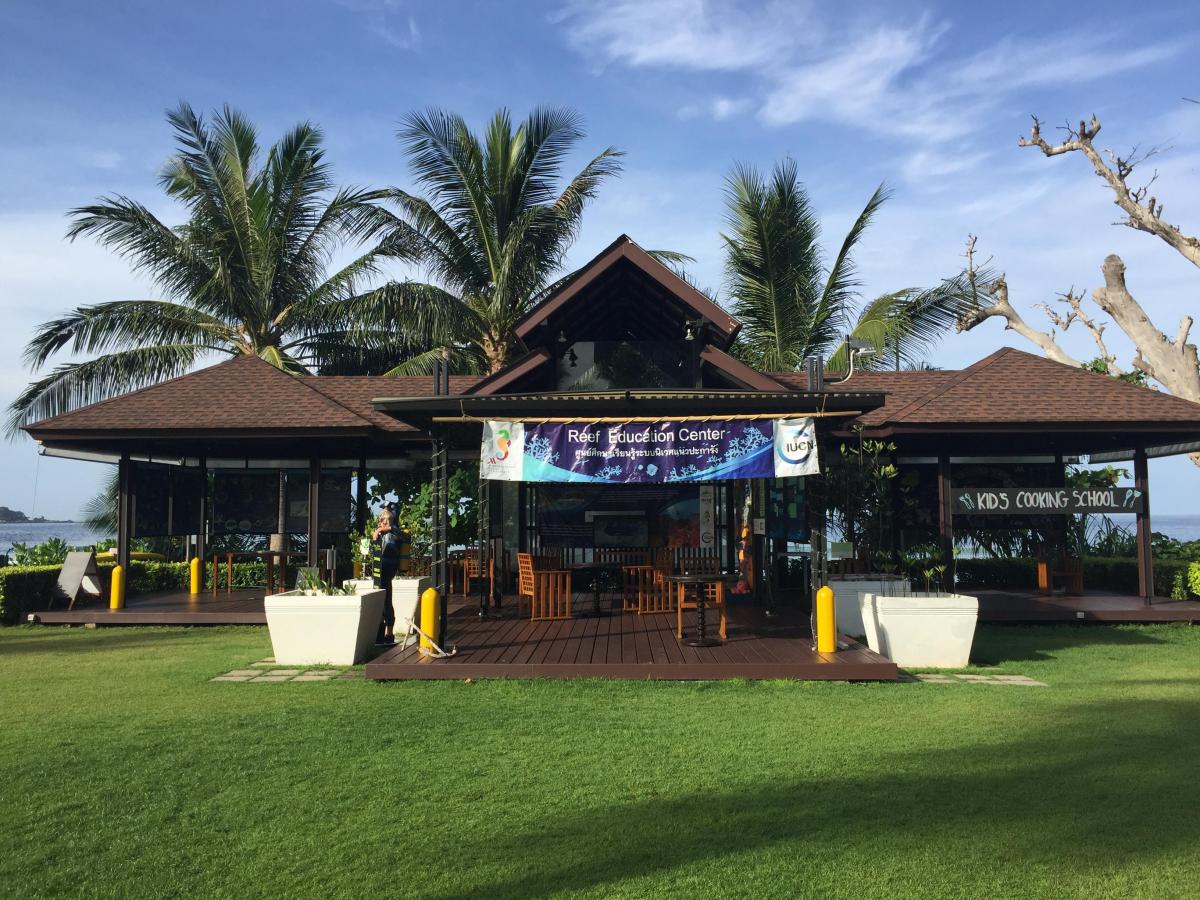
The Reef Education Center at Marriott Merlin Beach
Photo: © Kathryn Bimson/IUCN
The center’s presence at the beachfront encourages guests to learn about the ecosystem before they enter the water, highlighting the vibrantly colored reef fish, healthy coral structures, and various invertebrates they may come across while on the reef. Visitors are educated about proper reef etiquette, to only look at the organisms and to be careful of their fins while in the water. Feeding fish and collecting shells or other organisms is strongly discouraged, and explanations are given to guests who do not understand how their actions can be detrimental to the ecosystem.
A video slideshow plays on a television in the Center, highlighting the various animals that can be seen on the reef, including green turtles, reef octopus, butterfly fishes, cuttlefish, moray eels, and scorpion fishes, among many others. All photos were taken on the reef itself, giving guests a clear representation of what they may find on their visit. Reef animal identification banners allow snorkelers and beachgoers to identify the animals they have seen in the area.
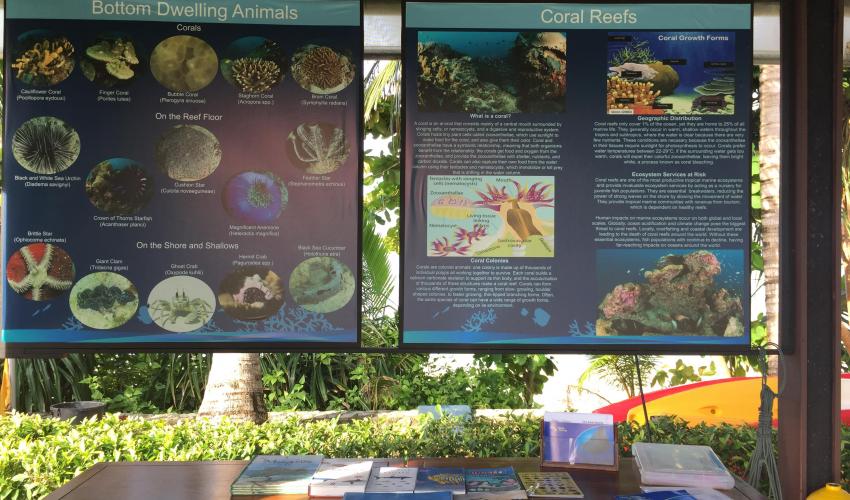 Photo: Posters and books inside the Reef Center provide ecosystem information to guests © Kathryn Bimson/IUCN
Photo: Posters and books inside the Reef Center provide ecosystem information to guests © Kathryn Bimson/IUCN
Younger guests are invited to attend daily beach walks and tide pool discovery walks. At low tide, the receding water leaves shallow pools with many sea cucumbers, crabs, fish, and even moray eels to explore. Children delight in finding and identifying animals using the identification slates, while parents listen as the ecology of the system is explained. The previous hotel viewed these exposed coral skeletons as a drawback of the low tide on the property, but the Marriott and IUCN have worked together to use it as another way to learn about the reef. The future addition of a clownfish and coral aquarium will serve to draw more guests to the reef center.
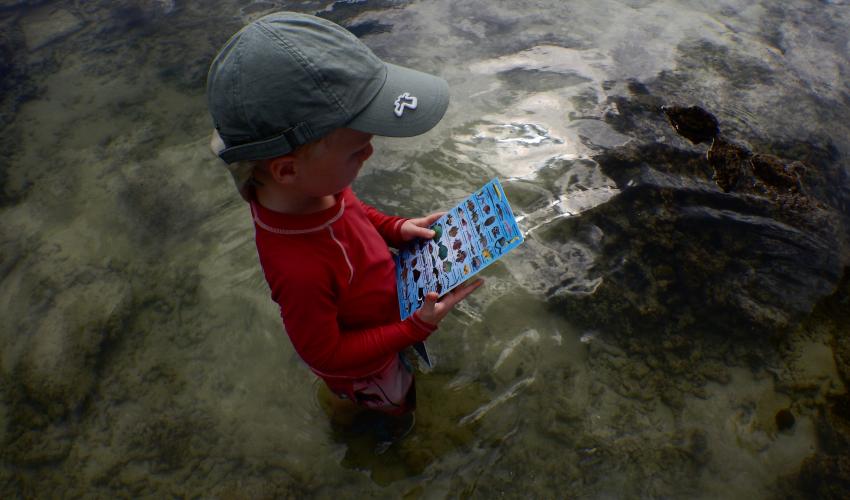 Photo: A young guest identifies an animal he has found using an identification key © Kathryn Bimson/ IUCN
Photo: A young guest identifies an animal he has found using an identification key © Kathryn Bimson/ IUCN
The “House Reef Marine Guide” was recently completed, and will be used as an additional tool to teach guests about the reef ecosystem. An e-copy of the guide will be emailed to guests upon booking, and a hard copy of the book will be provided in guest rooms. Engaging resort guests of all ages in reef conservation and education will help raise awareness of reef issues and also increase the visibility of the Marriott-IUCN partnership. Guests can also receive updates on the reef by following the Tri Trang Reef Education Center on Facebook.
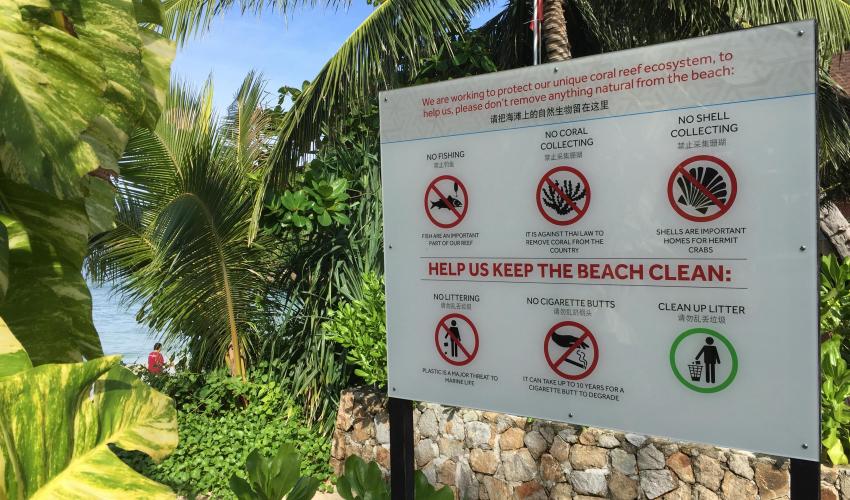 Photo: Sign board providing guests with beach guidelines © Kathryn Bimson/ IUCN
Photo: Sign board providing guests with beach guidelines © Kathryn Bimson/ IUCN
This blog is contributed by Kathryn Bimson, Reef Conservation Coordinator for the Marriott-IUCN partnership.
